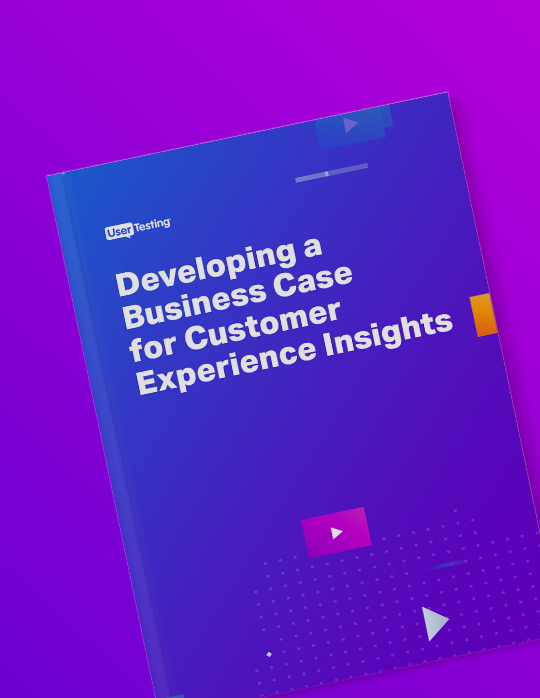
Everyday empathy: practical tips for applying customer empathy

At UserTesting we’re always talking about the importance of empathy, you might even say we’re obsessed! We thought we’d share some easy ways for you to use empathy to build better relationships with your customers. There are lots of ways to think about empathy. Psychologists Daniel Goleman and Paul Ekman bucket empathy into three different categories: cognitive, emotional, and compassionate. In this article, we'll dive into each of these categories to better understand different types of empathy and how you can apply them in a professional setting when interacting with your customers.
Cognitive empathy
Author Justin Bariso defines cognitive empathy as,
...the ability to understand how a person feels and what they might be thinking.
This type of empathy is helpful when you’re trying to give information or feedback to a person in the way that they would receive and understand it best.
How to use cognitive empathy
If you’re looking to tap into cognitive empathy more, it’s important to get into the habit of trying to recognize the mental or emotional state that someone else may be in. Seeking to understand the emotional or mental state your customers might be in when they’re interacting with your product, for example, is a great first step. One way to do this is by creating empathy maps, which allows you to better understand where your customers are in their journey. Talking to your customers and testing out different copy, products, and ideas, helps you create better digital experiences that are meeting their needs. If you know where they’re at, then you’re better equipped to communicate and make sure your message lands.
Emotional empathy
Bariso defines emotional empathy as,
...the ability to share the feelings of another person.
Remember that time a friend told you an emotional story of something they went through and you connected with their story? That’s emotional empathy.
How to use emotional empathy
As you’re building relationships with and gaining a better understanding of your customers, it’s important to check in on them. Sending a quick email to see how they’re doing with the onboarding process, or trying out a new feature is a great way to stay in touch with your customers while continuing to build a connection. Be sure not to reach out only when it suits you—like when you’re trying to sell them something new. Ask how they’re doing and continue to build that emotional empathy that will not only build a relationship with them but will set you apart from the competition. Customers want to feel valued and understood, so taking regular temperature checks will help establish that you’re invested in their experience and genuinely care about them.
Compassionate empathy
Last, but not least, we have compassionate empathy, which Bariso defines as when someone,
...goes beyond understanding and sharing in someone’s feelings, and is moved to take action.
How to use compassionate empathy
When you can understand and feel your customers pain points first-hand it makes you a better advocate for them. Spend time with your customers as they interact with your product and see where they struggle or get confused. Just think about that app that’s always so difficult to use, imagine if you spoke to their team, told them about your issues and it was fixed? You’d be a much happier customer and would use the app more frequently instead of just when you had to. Be sure to share what you learn with your entire team to get everyone onboard with cultivating a customer-centered mindset.
Everyday empathy
Applying empathy is the key to building better relationships with the people you interact with. However you define empathy, it’s about much more than a moment in time—it’s a principle that should be practiced daily, bringing you closer to your customers and empowering you to build better products and experiences.
Want to learn more?
If you’d like to learn how UserTesting can help you understand your customers through on-demand human insight, contact us here.
In this Article

Developing a business case for CX insights
Developing a business case for CX insights


